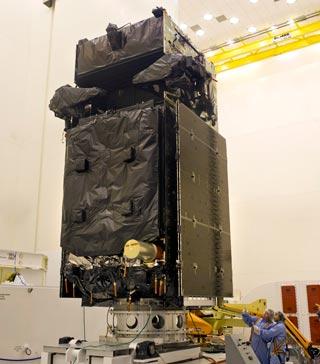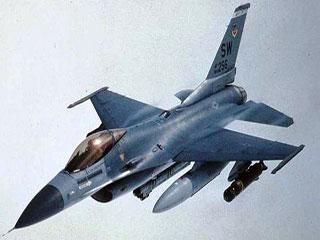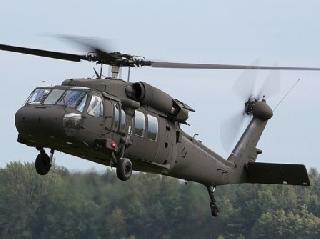
The first Space Based Infrared System (SBIRS) geosynchronous (GEO-1) satellite stands at Cape Canaveral Air Force Station, Florida, prior to being mated with the launch vehicle in preparation for its May 6 blastoff. Photo: Lockheed Martin.
CAPE CANAVERAL AIR FORCE STATION, FLORIDA (BNS): The US Air Force (USAF) and Lockheed Martin are ready to launch the first Space Based Infrared System (SBIRS) geosynchronous (GEO-1) spacecraft on Friday, aboard a United Launch Alliance Atlas V launch vehicle from Cape Canaveral Air Force Station, Florida.
The launch window is 2:14 p.m. EDT to 2:54 p.m. EDT.
SBIRS GEO-1 will enhance early warning of missile launches around the globe, support the country's ballistic missile defense system, greatly expand technical intelligence gathering capability of US, and also provide enhanced situational awareness for warfighters on the battlefield.
"SBIRS GEO-1 represents the dawn of a new era in overhead persistent infrared surveillance that will greatly improve national security for years to come," Brig Gen (select) Roger W. Teague, the US Air Force’s Infrared Space Systems Directorate director, was quoted as saying in the Lockheed Martin news release.
The GEO-1 satellite includes highly sophisticated scanning and staring sensors that will deliver enhanced infrared sensitivity and a reduction in area revisit times over the current constellation.
The scanning sensor will provide a wide area surveillance of missile launches and natural phenomena across the earth, while the staring sensor will be tasked to observe smaller areas of interest with enhanced sensitivity.
The SBIRS team is led by the Infrared Space Systems Directorate at the U.S. Air Force Space and Missile Systems Center. Lockheed Martin is the SBIRS prime contractor, with Northrop Grumman as the payload integrator. Air Force Space Command operates the SBIRS system.
 Previous Article
Previous Article Next Article
Next Article













The Indian Air Force, in its flight trials evaluation report submitted before the Defence Ministry l..
view articleAn insight into the Medium Multi-Role Combat Aircraft competition...
view articleSky enthusiasts can now spot the International Space Station (ISS) commanded by Indian-American astr..
view article